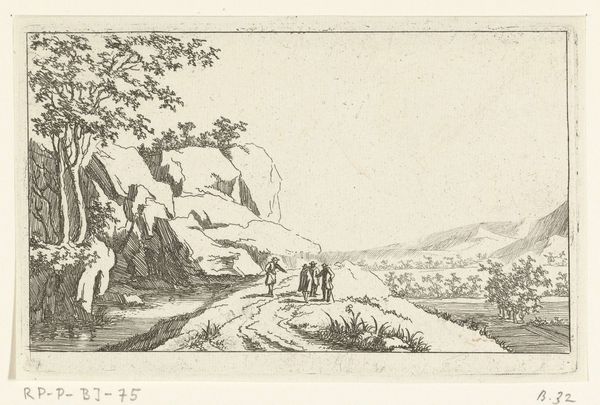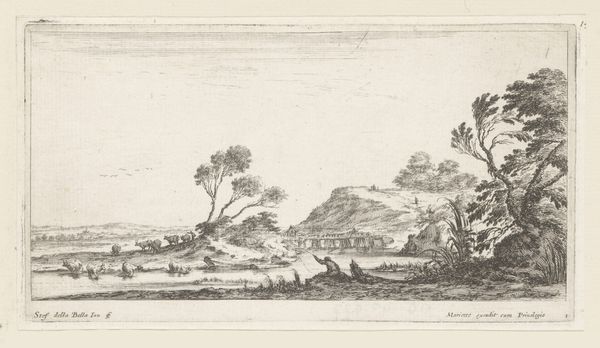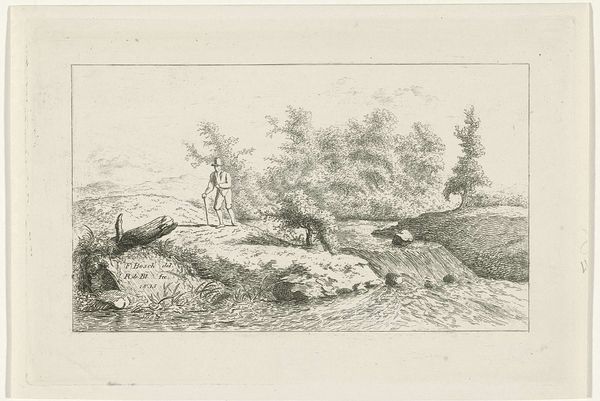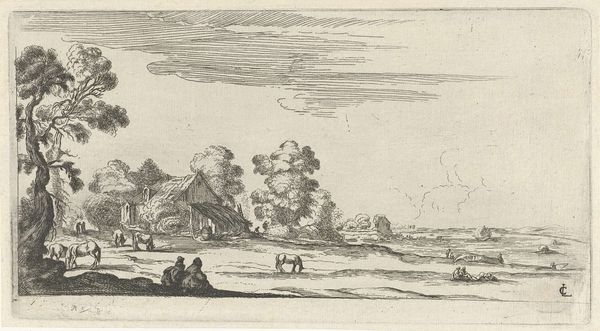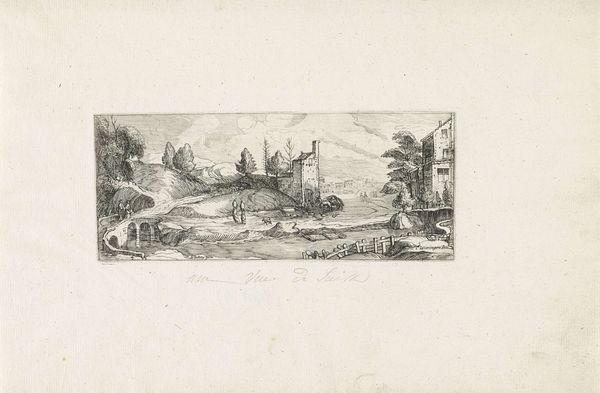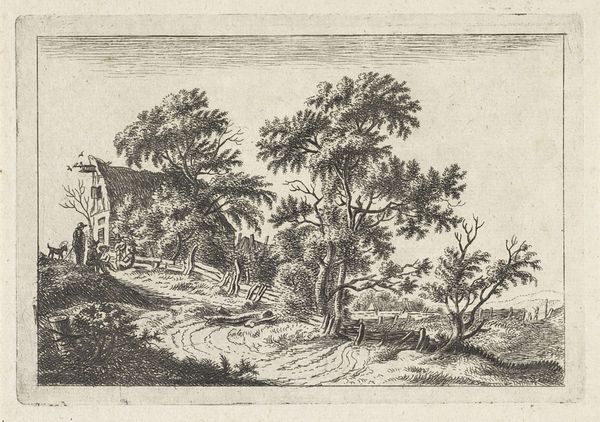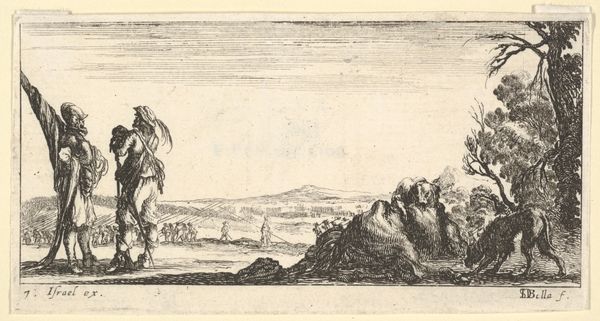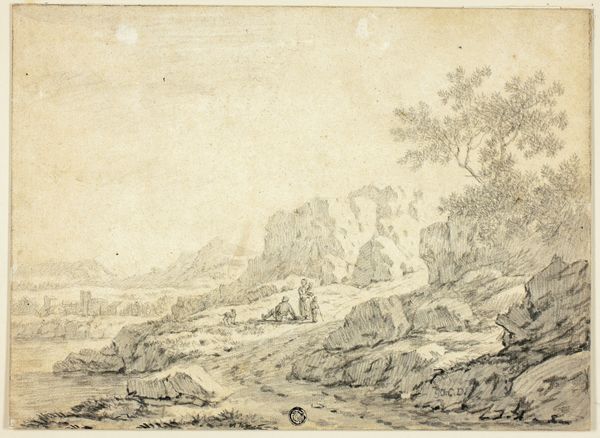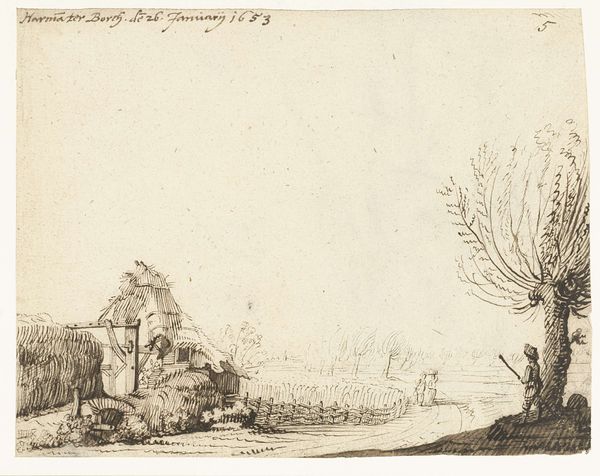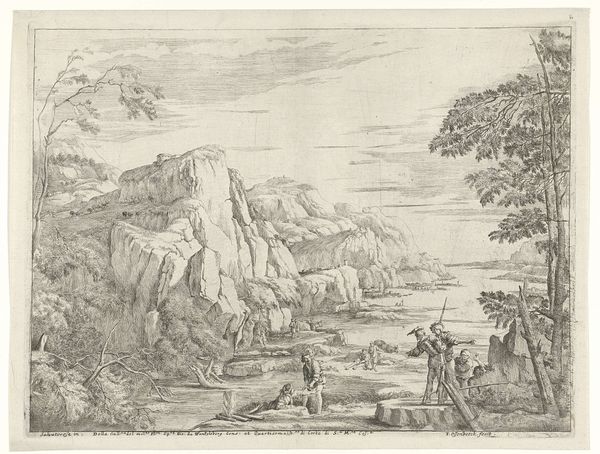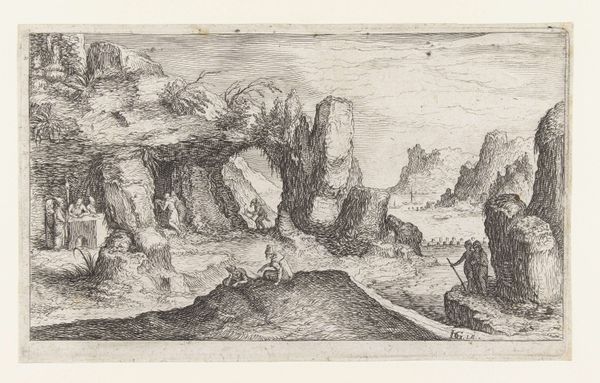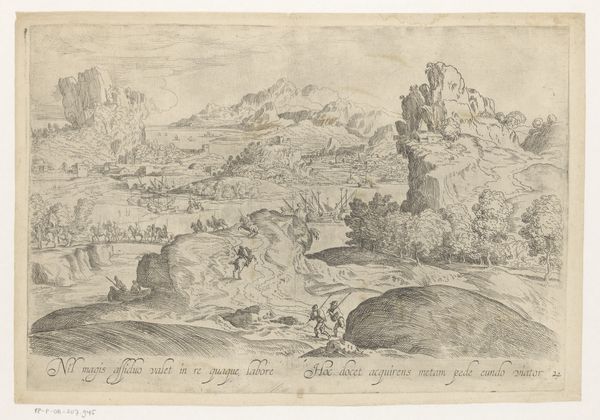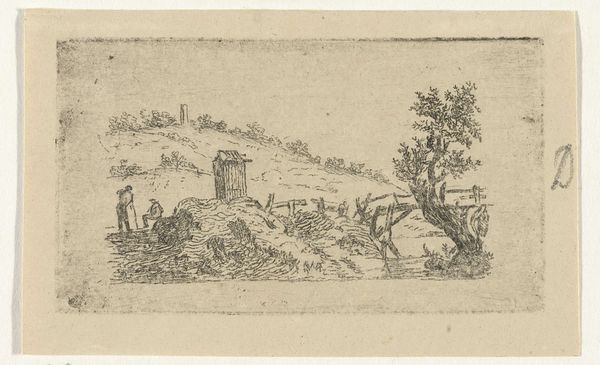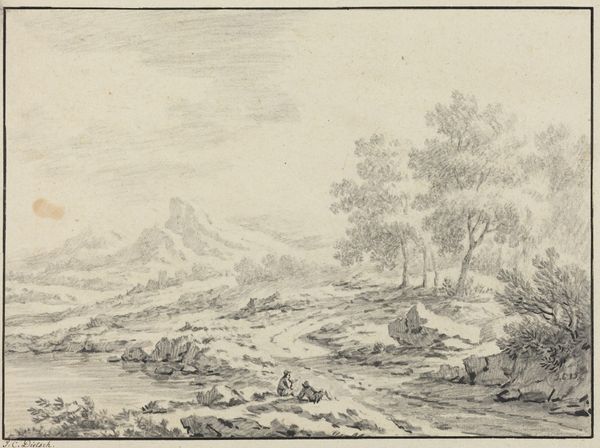
print, etching
#
baroque
# print
#
etching
#
landscape
#
rock
#
genre-painting
#
realism
Dimensions: height 98 mm, width 172 mm
Copyright: Rijks Museum: Open Domain
Curator: Here we have an etching from the period of 1610 to 1650, titled "Herders met schapen bij rotsen," or "Shepherds with Sheep near Rocks." It's an anonymous work housed here at the Rijksmuseum. What strikes you about it? Editor: There's an arresting bleakness in its simplicity. The landscape is stripped bare, and the herders and their sheep seem like lonely figures within this expansive space. It gives the impression of a quiet, desolate scene. Curator: Absolutely. Remember that the Dutch Golden Age was built on maritime trade and expanding global capitalism. Works like this one, however, reveal the day-to-day life, the agrarian base upon which that wealth was also dependent. We see the common laborer, even within idealized landscape traditions. Editor: The etching technique creates an interesting contrast. Look at the almost scientific rendering of the rocks, yet the figures appear stylized. How do the materials contribute to this duality? Curator: As a print, this would have been relatively accessible and widely distributed, serving not only as art, but also, and perhaps more importantly, as social record and a kind of visual rhetoric reinforcing existing hierarchies and modes of labor. These images helped shape social consciousness at the time. Editor: I'm struck by how the artist uses the horizontal lines in the landscape to create depth, contrasting with the vertical lines used to render the textures of the rocks and trees, creating both recession and tension in the image. Curator: It really underscores the complexities of the relationship between humans, labor and landscape in the Dutch Golden Age. It moves beyond the more celebrated images of wealth to expose these realities. Editor: For me, its power lies in how these formal tensions between the desolate landscape and the small figures contribute to an overall feeling of serene isolation and invites me to project my feelings onto it. Curator: And for me, understanding the work necessitates investigating the broader cultural landscape in which such scenes of labor gained popularity, in understanding how they shape, and were shaped by, Dutch society.
Comments
No comments
Be the first to comment and join the conversation on the ultimate creative platform.
